
Articles by Gynaecological
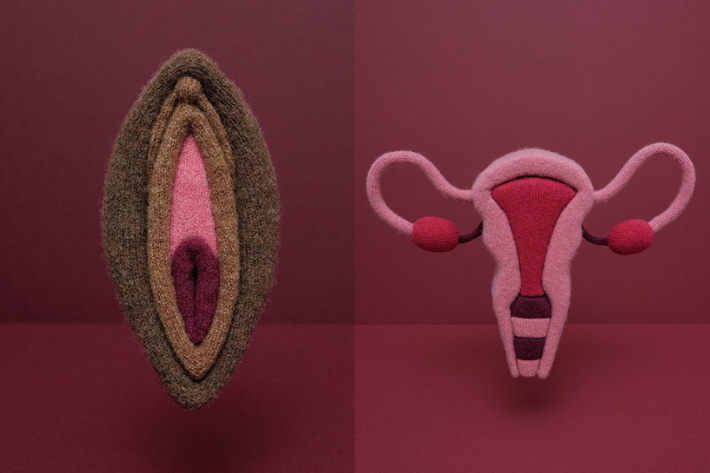
How to ensure a healthy vagina, vulva, cervix, and uterus
Knowing how to look after your vagina, vulva, cervix, and uterus can lead to a healthier, safer, and more pleasurable life. More than just knowing the anatomy, understanding parts of the vulva and uterus can be the first step towards taking care of your own sexual health, pleasure, and wellbeing. The vagina & vulva The vagina is the muscular tube inside the body which runs from the vaginal opening to the cervix. The vulva is the external part of the genital area surrounding the vaginal opening. The vulva and vagina come in different shapes and sizes and are totally unique to the individual. Practicing a healthy lifestyle with a good diet and exercise can help keep the vagina and vulva in good shape. Walking and running can help tone up the pelvic floor, along with pelvic muscle training which is the practice of contracting and relaxing the pelvic floor muscles, also known as Kegels. Natural hygiene It is normal for the vagina to produce discharge – this discharge helps the vagina to clean itself naturally. Vaginal discharge can vary in amount and consistency throughout the menstrual cycle, pregnancy and menopause based on hormonal changes. Healthy discharge doesn’t have a strong smell or colour and shouldn’t cause itching, burning or soreness. However, if you notice any unusual changes in smell or colour or any symptoms such as burning or itching associated with the discharge, contact your local healthcare provider. Washing the vagina & vulva We recommend gently washing the vulva with water alone or a mild unperfumed soap and to avoid using harsh scented products. This can help reduce the risk of infections such as thrush or bacterial vaginosis caused by perfumed soaps. As noted above, the vagina cleans itself naturally. The vagina contains lots of good bacteria which protects it from other organisms and helps keep the pH levels in balance. The healthy pH balance can be disrupted by washing inside the vagina (douching) or using scented wipes and deodorants. We recommend avoiding douching and using scented products. Sexually transmitted infections (STIs) During sex some bacteria and viruses can get into the vagina and make their way up to the cervix and uterus. These can lead to sexually transmitted infections (STIs) such as chlamydia, gonorrhea, genital herpes, and HIV. The vagina, cervix, and uterus can be protected from these infections by using a condom during sex. Condoms are recommended as the only form of contraception to prevent unintended pregnancies and to protect against STIs, including HIV. Always seek medical advice if you think you are at risk of an STI or experience changes to the smell or colour of discharge. The cervix The cervix is the lower, narrow end of the uterus that forms a canal between the uterus and vagina. It helps to keep bacteria and viruses from getting into the uterus and produces mucous to help sperm get through to fertilize an egg around the time of ovulation. Cervical screening The main tools in the fight against cervical cancer are vaccination and screening. Following the World Health Organization’s guidance, we recommend that all young people 9-26 years receive the HPV vaccination where available. Regular cervical screening for adults is also highly recommended. Being screened regularly can help early detection of any abnormal cell changes in the cervix and ensure access to treatment to prevent cancer developing. Depending on where you live, you may be invited to a screening. If not, contact your local healthcare provider to set up an appointment. The uterus Often described as pear-shaped, the uterus (womb) sits in the pelvis between the bladder and rectum and is connected to the vagina by the cervix. The uterus enlarges during pregnancy and often shrinks back to its original size within several weeks after delivery. On either side of the uterus are the fallopian tubes and ovaries, and together with the vagina and cervix make up the female reproductive system. The lining of the uterus thickens and sheds each month which is what causes menstrual bleeding. Taking care of your uterus Like the rest of the body there are several ways to keep your uterus healthy including exercise and diet. However, there are some medical conditions, which can affect the uterus. The uterus can be affected by painful conditions such as fibroids, polyps, endometriosis, and cancer. Some people may experience irregular menstrual bleeding or difficulty getting pregnant. Pain is often felt in the pelvic and lower abdominal areas. It is important to seek medical advice from your local healthcare provider if you have any symptoms and concerns. Being proactive about your health and wellbeing can ensure you get access to the right treatment and care should you need it. Main photos courtesy of Jessica Dance
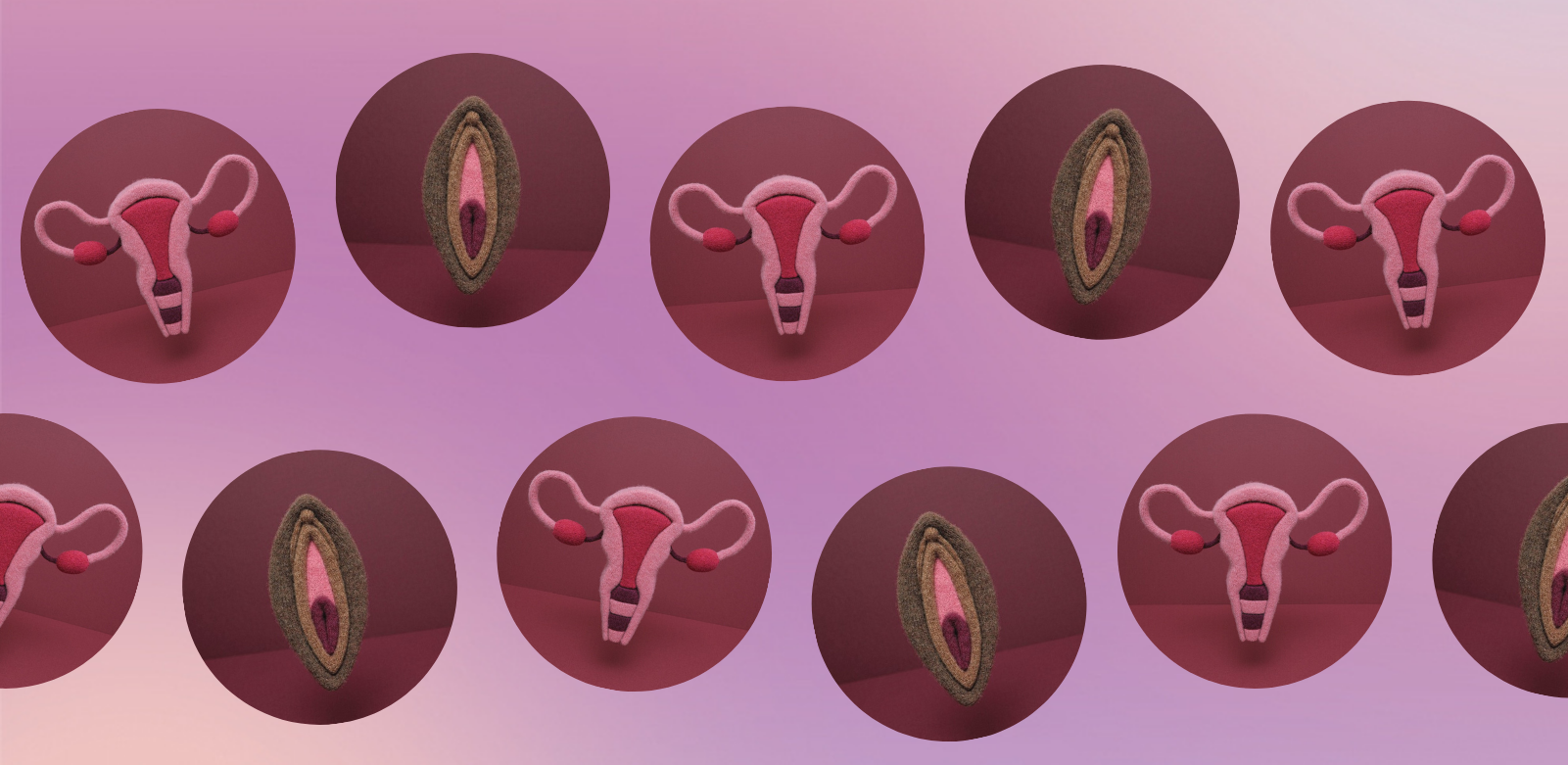
Cervical cancer: what you should know
Cervical cancer affects many lives. In fact, it is the fourth most common cancer globally – but it is preventable. From prevention methods to symptoms, treatment and more, we've covered some of the main questions you might have about it. What is cervical cancer? And what’s it got to do with HPV? Cervical cancer occurs when cells in the lining of the cervix (the entrance to the uterus from the vagina) change in a malignant (i.e. harmful) way. The primary cause of cervical cancer is human papillomavirus (HPV). There are more than 100 types of HPV. HPV is mainly transmitted through unprotected sexual contact, including skin-to-skin genital contact. It is very common, and most sexually active people will get some type of HPV in their life, regardless of gender or sexuality. HPV has no symptoms, so you may not know if you have it, and there is currently no treatment for it. It is generally not something to worry about, as most HPV infections can be cleared up by the body’s own immune system. HPV can be divided into low-risk and high-risk types. Low-risk HPV can cause genital warts. High-risk HPV is associated with precancerous cervical lesions, cervical cancer and cancers of the anus, vulva, vagina, penis, and oropharynx (the part of the throat directly behind the mouth). How do I prevent myself from getting cervical cancer? The main tools in the fight against cervical cancer are vaccination and screening. IPPF recommends that all young people aged 9-14 years – regardless of their sex – receive the HPV vaccination, as anyone can carry/transmit HPV. QUICK POLL: Have you had an HPV vaccine?YesNo Regular cervical screening for adults is also highly recommended. Depending on where you live, you may be invited to these. If not, contact your local healthcare provider to set up an appointment. In addition, increased condom use can also help lessen the risk of HPV transmission – as well as the transmission of other STIs and HIV. How does a cervical screening work? Does it hurt? The process usually involves you lying on your back, with your knees bent and spread apart. A healthcare professional uses a tool called a speculum, which is inserted into the vagina to open it up, usually with the aid of some lubricant. If you receive HPV-testing or cytology, a small brush is then used to collect samples from the cervix that will be further examined. If you receive visual inspection with acetic acid (VIA), a healthcare professional will apply acetic acid to your cervix and inspect the change. The whole process should only take a few minutes. Some people might experience some discomfort during a cervical screening, but it shouldn’t hurt. If you’re nervous, let your healthcare professional know – they might be able to use a smaller speculum or more lubricant. You can also perhaps try some breathing exercises to help you relax. It is possible to experience some light spotted bleeding after your screening. If it is heavy or painful, you should seek medical care. Based on the screening option you choose, you should receive the results of your screening from your healthcare provider on the same day or after a few days. If they detect anything of concern, they will recommend you for further investigation. QUICK POLL: If you are an adult with a cervix, how often do you attend cervical screenings?As often as they are recommended/available to meI have them, but it's irregularI've never had one What are the symptoms of cervical cancer? The main symptom of cervical cancer is unusual vaginal bleeding – which can mean bleeding during/after sex, bleeding in between periods, or bleeding after the menopause. This bleeding can be happening for other reasons too, so it’s best to seek medical help to determine exactly what is causing it. Other symptoms may include (but are not limited to) pain and discomfort during sex, unusual vaginal discharge, pain in your lower back or pelvis, constipation, using the toilet more frequently, blood in your urine, or losing control of your bowels/bladder. It’s important to note that not everyone with cervical cancer will experience noticeable symptoms, which is why it is important to attend regular screening – even if you feel healthy. How is cervical cancer treated? Precancerous cervical lesions are curable. After diagnosis, you might – with your consent – receive treatment for these precancerous lesions. If your results show cancerous lesions, you will receive further investigation, such as X-rays, and relevant treatments, which may be surgery, radiotherapy, chemotherapy, or a combination of these. Where the cancer is not treatable, it may be possible to undergo palliative care, which means improving your quality of life and relieving symptoms, such as pain and vaginal bleeding. A healthcare provider will discuss these options in detail with you if needed. Can I get cervical cancer if I’ve had a hysterectomy? No, if you have had your cervix removed as part of a total hysterectomy, then you are not at risk of cervical cancer. I’m a trans man – can I still get cervical cancer? If you have a cervix, yes. If you have had your cervix removed, then you are not at risk of cervical cancer. I’m HIV positive, what does this mean for me? For people with weakened immune systems, such as those with poorly-managed HIV, the risks are far greater. Cervical cancer is the most common cancer among people with cervixes who are also living with HIV. Therefore, it is vital that people living with HIV are vaccinated against HPV if eligible, and attend regular screenings throughout their lifetime. How worried should I be about getting cervical cancer? Any symptoms described above that you experience are normally not something to be worried about. However, it’s important that you take a proactive role in keeping yourself healthy. This means getting the HPV vaccine if you are eligible and it’s available, and attending your regular screenings throughout your adult life. This is the best way to ensure you remain free of cervical cancer. Image courtesy of Jessica Dance, who knitted a uterus exclusively for IPPF

IPPF welcomes President Biden’s decision to repeal the Global Gag Rule
The International Planned Parenthood Federation (IPPF) welcomes the news of President Biden’s decision to keep his promise and repeal the harmful Global Gag Rule (GGR) – also known as the Mexico City Policy. Since its expanded reintroduction in 2017 by the previous administration, the Global Gag Rule has contributed to an increase in unintended and high-risk pregnancies, unsafe abortions – culminating in unnecessary maternal deaths. For IPPF, 53 healthcare projects in 32 countries were impacted by GGR, with some Member Associations losing up to 60% of their funding. IPPF’s Director-General, Dr Alvaro Bermejo said: “I welcome the decision by President Biden to repeal the Global Gag Rule. “The expanded reintroduction of the gag was callously designed to deny women the right to decide what happens to their body. Whilst we know this policy is intended as a tool to attack abortion care by the anti-choice movement, not only has it led to reproductive coercion, it has cut deeper into healthcare provision: from HIV prevention programs to maternal health to contraceptive access – no one was spared the fallout of this policy. “What lies ahead of us is years of work to undo the harm caused by Global Gag Rule, and to build back a better and stronger relationship with the US – one where our work is not under threat from future anti-sexual and reproductive health administrations. To protect the rights of future generations of women and girls, we ask that the Biden-Harris administration take the necessary steps to permanently repeal the Global Gag Rule. Without a permanent repeal, the global gag remains a constant threat to women, girls, youth and marginalized communities. Reproductive rights, bodily autonomy and the human right to decide what happens to your body cannot be at the mercy of a pen stroke. “IPPF looks on with hope and welcomes the opportunity to work closely with the Biden-Harris administration to protect and advance sexual and reproductive healthcare for all.” And President and CEO, Planned Parenthood Federation of America, Alexis McGill Johnson said: “Over the past four years, the United States didn’t just fail to support global reproductive health care access – it actively blocked it. Today, we applaud the beginning of a new chapter, as the Biden-Harris administration puts an end to the devastating global gag rule, which has prevented millions of people around the world from receiving essential health care. We look forward to working alongside the administration and Congress to pass the Global HER Act, to permanently protect access to sexual and reproductive health care across the globe from changes in White House political control. It is long past time that the United States proudly declares to the world that reproductive rights are human rights.” IPPF would like to thank the international community who stepped in and stepped up to help fill the funding gap that was left by the Global Gag Rule. Together, we will continue to fight and deliver sexual and reproductive health and rights. For media inquiries please contact [email protected] (+44) 2079398227
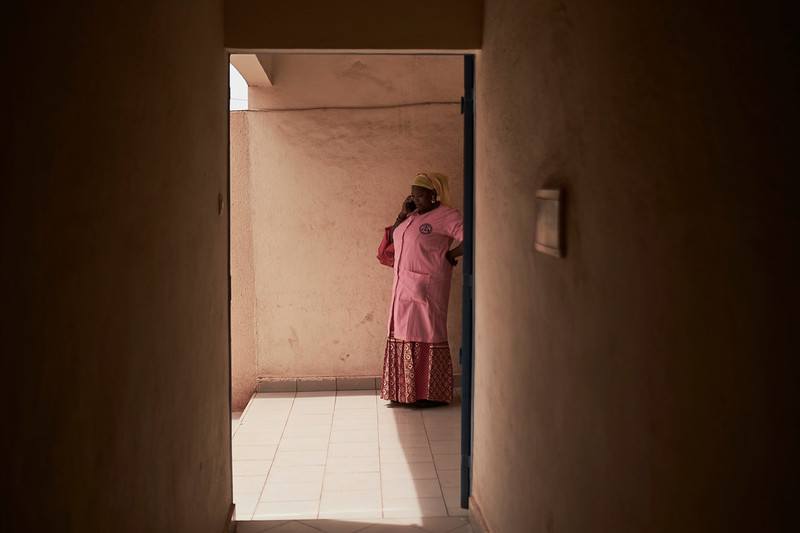
"We see cases of early pregnancy from 14 years old – occasionally they are younger"
My name is Mariame Doumbia, I am a midwife with the Association Malienne pour la Protection et la Promotion de la Famille (AMPPF), providing family planning and sexual health services to Malians in and around the capital, Bamako. I have worked with AMPPF for almost six years in total, but there was a break two years ago when American funding stopped due to the Global Gag Rule. I was able to come back to work with Canadian funding for the project SheDecides, and they have paid my salary for the last two years. I work at fixed and mobile clinics in Bamako. In the neighbourhood of Kalabancoro, which is on the outskirts of the capital, I receive clients at the clinic who would not be able to afford travel to somewhere farther away. It’s a poor neighbourhood. Providing the correct information The women come with their ideas about sex, sometimes with lots of rumours, but we go through it all with them to explain what sexual health is and how to maintain it. We clarify things for them. More and more they come with their mothers, or their boyfriends or husbands. The youngest ones come to ask about their periods and how they can count their menstrual cycle. Then they start to ask about sex. These days the price of sanitary pads is going down, so they are using bits of fabric less often, which is what I used to see. Seeing the impact of our work We see cases of early pregnancy here in Kalabancoro, but the numbers are definitely going down. Most are from 14 years old upwards, though occasionally they are younger. SheDecides has brought so much to this clinic, starting with the fact that before the project’s arrival there was no one here at all for a prolonged period of time. Now the community has the right to information and I try my best to answer all their questions.
Period products: what are the options?
Once a month, most people aged between around 13 and 50, and who have a uterus, will experience a period – the 3-7 day window where blood from the uterus is released through the vagina. With this totalling about 450 periods in a lifetime, it’s always a good idea to be thinking about the products used to manage your periods. This is especially true nowadays given that the landscape of period products has changed dramatically in recent years, and concerns around sustainability are (rightfully) ever-increasing. Allow us to show you some of the main options available. Sanitary pads Probably the most commonly used period product, the sanitary pad/napkin has been around commercially for over a century. They are attached to the inside of the user’s underwear, and work by absorbing menstrual blood through layers of absorbent material – usually rayon, cotton and plastic. Over the decades the design of pads has evolved to become much more absorbent and comfortable, with a wide range available to suit different flows. However, due to their disposable nature they’re not the most environmentally-friendly option, as they must be changed roughly every four hours to prevent bacteria growth and odor. This can also mean the lifetime cost of a pack or two of pads every month really adds up. The good news is that there are now washable sanitary pads available in many countries. These can be reused multiple times, which is both more environmentally-friendly and cost-effective. Tampons In terms of popular use, the tampon is a close second to the sanitary pad. Similar in terms of the materials it is made of, they differ in that a tampon is used internally by insertion into the vaginal canal. This can take practice, and not everyone finds them comfortable to use. Tampons work by absorbing menstrual blood internally (though leaks are not uncommon, so an additional pantiliner may be required), and can be left in for about four hours, at which point they are removed by pulling gently on the string. Many users like tampons because they are more discreet than pads, both in terms of the smaller packaging and while they are being used (i.e. they are not visible on the underwear). Plus, they can generally feel more comfortable when compared to sitting on a pad, which if left on too long can get messy. But as with most pads, because they are disposable and non-biodegradable, tampons are not the most environmentally sound or cost-effective option. Another consideration is Toxic Shock Syndrome (TSS). As well as absorbing menstrual blood, tampons can also absorb the vagina’s natural lubricant and bacteria, increasing the risk of TSS, a rare but potentially fatal condition. To lower the risk, use the lowest absorbency rating possible to suit your menstrual flow. Menstrual cups In recent years, many people have given up the more traditional options of tampons and pads in favor of the menstrual cup. This small silicone or latex cup works by being folded and inserted internally so that it rests on the vaginal wall, where it collects blood. It takes a bit of practice to get the positioning right, but once the technique is mastered then leakages shouldn’t be a problem, and they are normally very comfortable. The cups can stay in for up to 12 hours, at which point they should be removed, emptied, rinsed, and re-used as necessary. At the end of the menstrual cycle, they should be sterilized in hot water before using for the next period. They can be used for up to a decade (that’s right, a decade), making them one of the most eco and wallet-friendly options. It should be noted that as with tampons, there is a small risk of TSS with menstrual cups. Menstrual discs The lesser known menstrual disc, made of plastic or silicone, is also inserted into the vagina, and rests on the base of the cervix. Like the menstrual cup, it can stay in for up to 12 hours, and works by collecting blood in the disc – and again, similar to the cup, it can also take some time to figure out how to use it properly. Once the user is done with it, it is removed and its contents emptied into the toilet. However, it differs from the cup in that most menstrual discs are not reusable, so are not as environmentally or cost-friendly. One significant benefit of menstrual discs is that they can stay in while you have sex (unlike tampons and cups), and some people have even reported that they experience less painful periods while using them. Underwear The latest newcomer to the period scene is period underwear. They look like regular underwear, except they have a special absorbent layer which prevents leakages onto clothing, and as they are washable, they are one of the most sustainable options available. A good pair will prevent odors emitting, and will feel comfortable to the wearer. They are not the cheapest option, but they certainly pay off when compared to years of spending on disposable pads or tampons. Some people experience leaks on particularly heavy flow days, so they sometimes pair them with another period product. However, this innovative item is evolving quickly, and more absorbent iterations are coming onto the market all the time. Now, over to you! If you menstruate, what's your period product of choice?Sanitary padsTamponsMenstrual cupsMenstrual discsUnderwearNothingSomething else Illustrations by Roza Nozari

The Period Quiz
The Period QuizAbout half the world’s population menstruates at some point in their lives, but periods are still a big taboo in many places. What do you really know about the flow? Find out in our quiz...How many periods does the average person have in a lifetime?Only girls and women get periodsAt what point during the menstrual cycle is someone most likely to get pregnant?How much blood does the average person lose during a period?What proportion of girls in Ghana sometimes miss school due to their periods?What is the lifetime cost of a period in the UK?How many menstruators in India use unsafe materials (such as ashes and mud) to manage their periods?Good try! ? If you learned something new today, scroll down to share this with friends.Great work! ? If you learned something new today, scroll down to share this with friends.
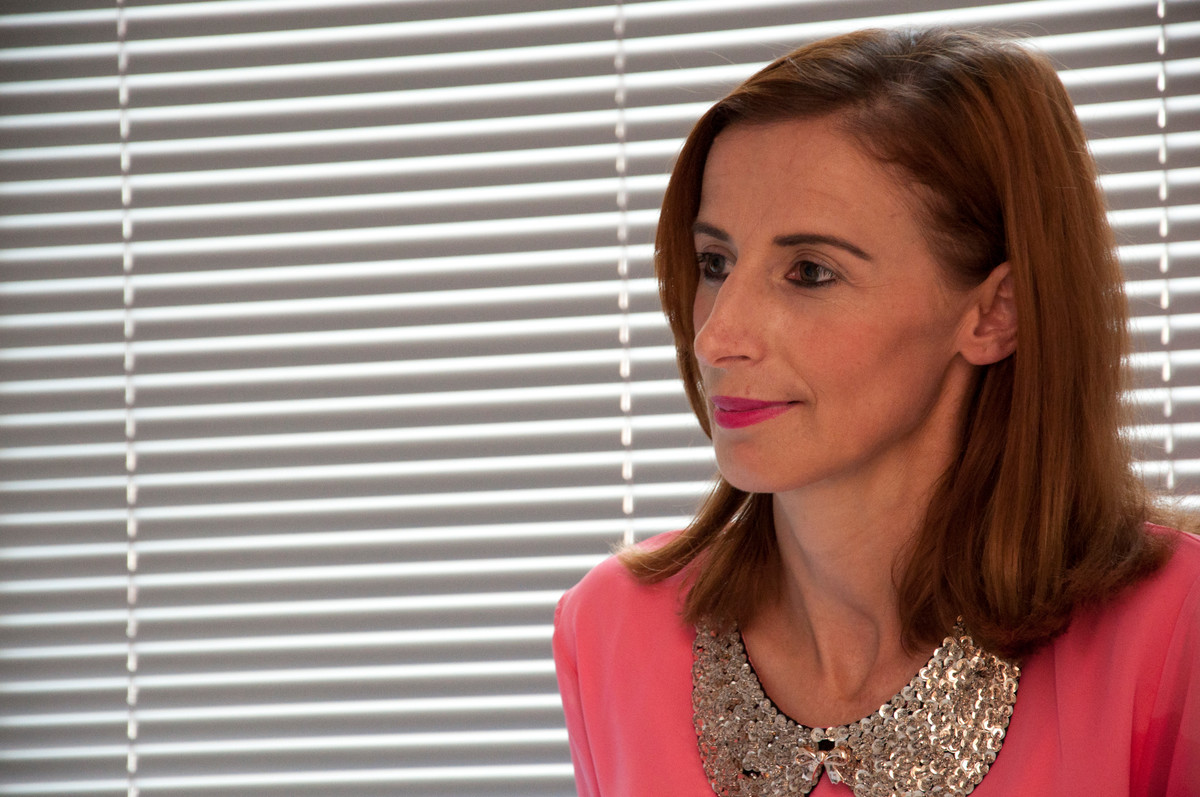
"I decided to do cryotherapy. It was the best decision I have made in my life."
With three children to raise on her own, Liljana’s health was the last thing on her mind but she could no longer ignore the feeling that something was wrong. Through speaking to her friends, she learnt about the Albanian Centre of Population and Development (ACDP) clinic. “First, I had the gynaecological visit and after that, for 1 minute, the doctor did the VIA test. The response was immediate, but positive. I was so scared. The doctor was able to calm me down by explaining everything very simply. Everything was going to be all right because this disease was 100% curable.” Liljana underwent treatment for pre-cancerous lesions for two weeks, but the results of the test were still positive. The doctor suggested cryotherapy. “I decided to do cryotherapy, which is very simple and very comfortable. It was the best decision I have made in my life. After two years, I am completely recovered. I am very grateful to the ACDP clinic, they saved my life.” What is VIA & Cryotherapy? Show more + Visual inspection of the cervix with acetic acid (VIA) is a process of screening and examining the cervix. Pre-cancerous lesions on the cervix will turn white when the acid is applied. This simple procedure can be done in a clinic setting without the use of a laboratory and allows for immediate treatment of any pre-cancerous lesions with cryotherapy. Cryotherapy is a gynaecological treatment that freezes and destroys abnormal, pre-cancerous cervical cells. Cryotherapy is not a treatment for cervical cancer. VIA has the potential to revolutionize cervical cancer prevention efforts, particularly in low resource settings, because it eliminates the need for laboratories, transportation of specimens and provides immediate test results. VIA needs less equipment and fewer specialists than traditional cervical cancer screening methods like Pap tests. Results from VIA are available immediately so women can be screened and treated in one single visit. A happier & healthier life Now Liljana is having routine checks following the advice of the doctor and maintains regular contact with the clinic. “I know that whenever I need advice, I can call the doctor or the nurse and always get a response.” Liljana told all her friends about the VIA procedure and recommended many of them to the clinic in Tirana. Since her successful treatment, Liljana has noticed the relationship with her children has also improved. “My 15 years daughter says that now I smile more than before. She has noticed that before the test I was sad, because I was thinking bad things about my life. This experience has helped me also to talk openly with my daughter about the reproductive and sexual life and teach her to take care of herself. The other two are boys, 13 and 10 years old, but I promise I will talk to them about the importance of having a healthy reproductive and sexual life.”
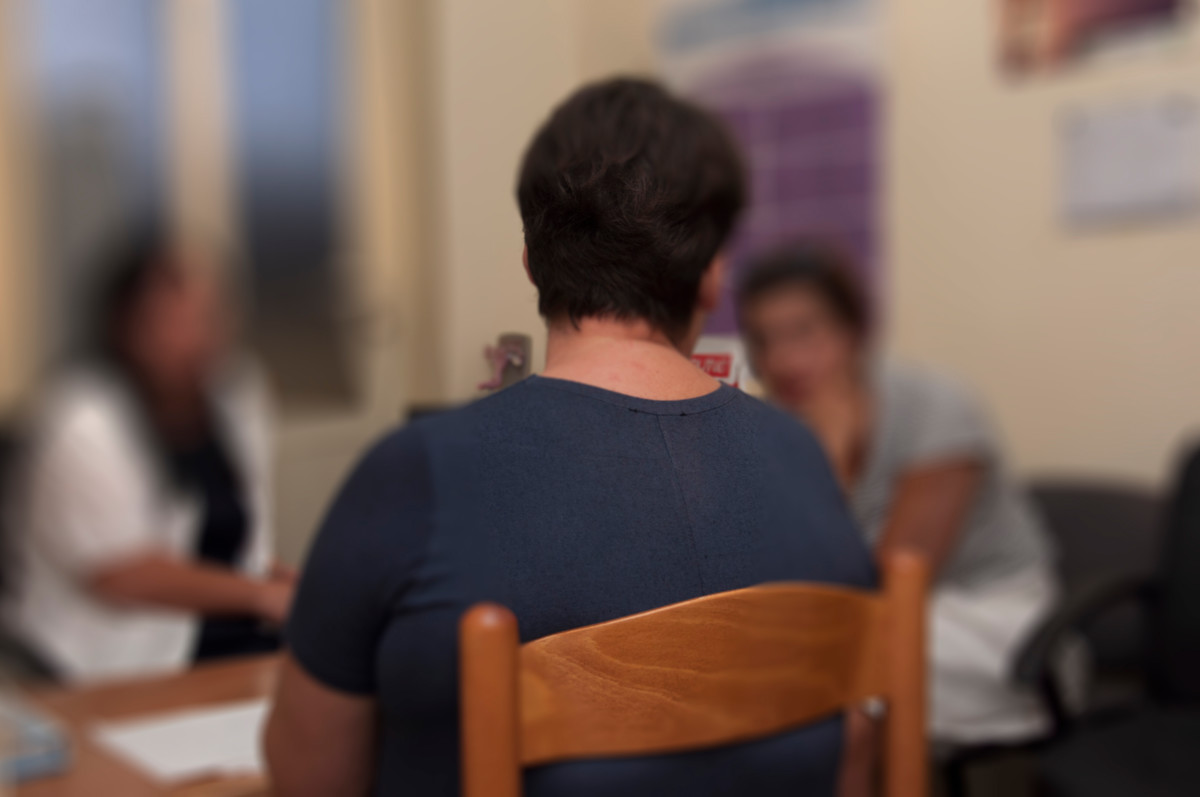
"Nowadays I feel much better and I am clean from signs of cancer”
Eleanor* is a mother of three children, she lives in Vlora, a city in south Albania. Eleanor and her children rely on her husband's modest income to survive. She is only too aware that her economic situation is a major barrier for her to access healthcare. Most treatments are referred to the capital, Tirana, or are at private clinics; incurring costs she simply cannot afford. When she heard about the Aulona Centre offering free PAP tests, she booked an appointment. “I have always admired women who take care of their health. Taking care of ourselves is decisive for our family wellbeing, children and relatives. But in our areas, it is difficult to get proper services, especially for reproductive health”, she says. Eleanor’s first pap smear was in 2012, the results came back negative. The doctor informed her that she had to come back in 3 years for another test. In 2015 she returned to the center, convinced that the results would again be negative. The results came back positive. “I remember the doctor underlining my name with red pen. She said to go to Tirana for further treatment because they had better equipment and staff there.” The encouragement from the staff of Aulona center helped Eleanor decide on her next steps. “While making my decision, I had this vision of my name underlined with red colour, which was an alert sign. So I contacted a doctor in Tirana and had the surgery in 2016. Nowadays I feel much better and I am clean from signs of cancer.” From a client to an activist Her experience with Aulona center has made Eleanor an ardent activist of reproductive health for women. “Every cousin in my family knows about my case. I encourage them to have a PAP screening although they don’t have any concern. For some of them is a matter of shame, because they think if you don’t have any problem, why you should expose intimate parts of your body to the doctor? I challenge them asking what it is more difficult: when the doctor says: Madam, you have few years to live left or just booking a visit? They listen to me more now because they see I recovered.” Through her activism, Eleanor has recently become aware of the VIA testing method and is enthusiastic about it. “The most wonderful thing about this new method [VIA] is that I don’t have to wait 3 weeks for the response. I recall the waiting period for the second test with my eyes attached to the telephone screen. Why are they not calling? Is there anything wrong with my results? VIA avoid all this anxiety, and you can start the therapy immediately.” Eleanor feels confident about her knowledge on sexual and reproductive health. Her own experiences allows her speak more openly with her 20-year-old old daughter, reminding her of the importance of regular screening. “The disease does not ask if you are rich or poor. I could have let myself at risk, but when interventions are at the right time, they save lives.” What is VIA & Cryotherapy? Show more + Visual inspection of the cervix with acetic acid (VIA) is a process of screening and examining the cervix. Pre-cancerous lesions on the cervix will turn white when the acid is applied. This simple procedure can be done in a clinic setting without the use of a laboratory and allows for immediate treatment of any pre-cancerous lesions with cryotherapy. Cryotherapy is a gynaecological treatment that freezes and destroys abnormal, pre-cancerous cervical cells. Cryotherapy is not a treatment for cervical cancer. VIA has the potential to revolutionize cervical cancer prevention efforts, particularly in low resource settings, because it eliminates the need for laboratories, transportation of specimens and provides immediate test results. VIA needs less equipment and fewer specialists than traditional cervical cancer screening methods like Pap tests. Results from VIA are available immediately so women can be screened and treated in one single visit. *Name has been changed

"I do this work because I believe every girl and woman’s life counts.”
Scrolling through her social media page, 21-year-old Artemisa Seraj stumbled across a post from the Aulona Center offering seminars and workshops on sexual and reproductive healthcare for young people and students. Feeling like she had the opportunity to learn something about a subject that she and her friends rarely discuss, she decided to attend one of the seminars. “I found the information very interesting because we don’t talk very much about these things with my friends. It is still a taboo. On the other hand, we know that the sexually transmitted infections are being spread among youngsters, but we don’t know how to protect ourselves.” The first seminar went so well, Artemisa decided that she wanted to become a volunteer. “I like very much to pass the information on to others. So, I discussed with the Enela, the director of the center, to become a volunteer and here I am today.” Empowering women & girls Since becoming an activist Artemisa is now even more passionate about the importance of comprehensive sexuality education (CSE) for young people, gender equality and women’s rights. “I have known many other girls and women in our outreach activities that have no information about their reproductive and sexual life. Especially, girls from rural areas are the most deprived of this kind of information. The health centers have no staff or adequate equipment for gynaecological visits. Aulona center has high standards of friendly services for teenagers and youngsters, so you feel safe and not prejudiced against. Confidentiality is very high here and the doctors are very qualified. In the young groups, you feel like a community, you can speak openly about your concerns.” Artemisa hopes that by distributing information to women and girls, it is empowering them as well giving them an opportunity to fight for their own rights. “I do think that even a single person can contribute to the improvement of the situation regarding CSE. It is an instinct now, whenever I meet a woman, I talk about the center. My greatest satisfaction as an activist is seeing them coming to the center for a [health] visit or for counselling, because this means that my work has paid off. I do this work because I believe every girl and woman’s life counts.”
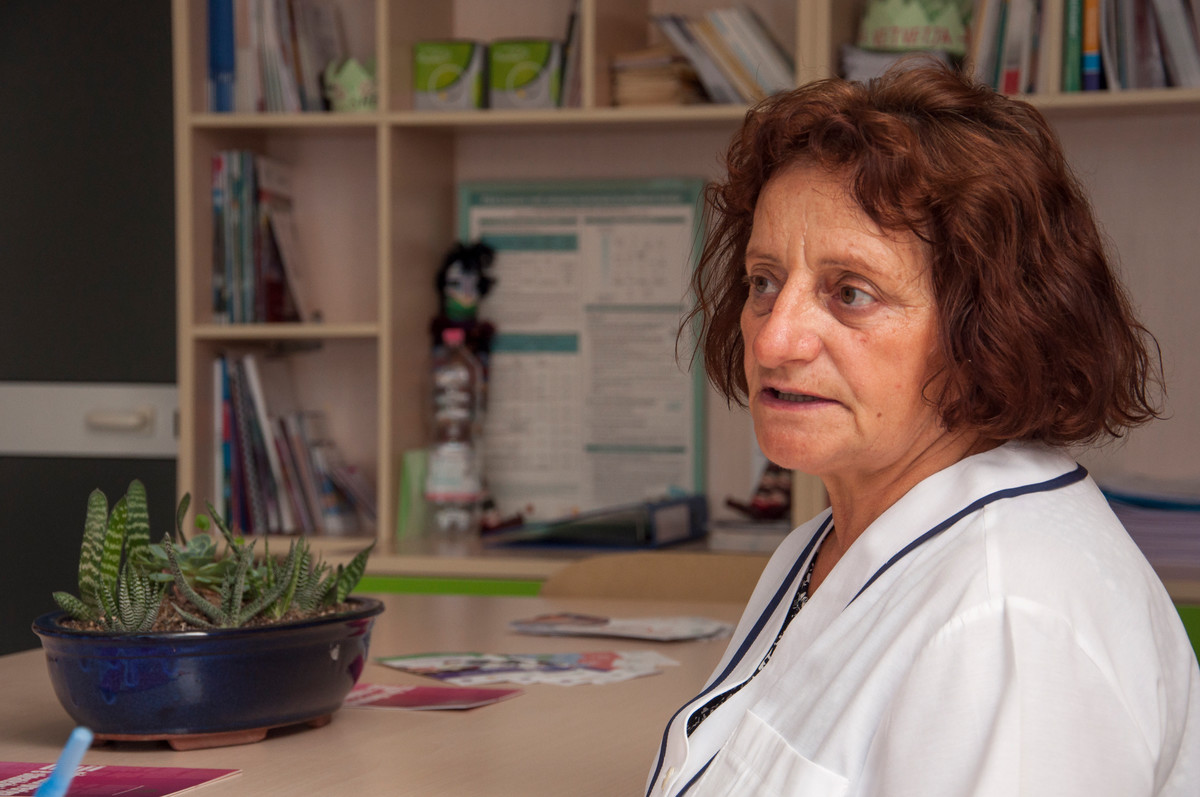
"Many of the women we work with have no health insurance"
Hatixhe Gorenca is a nurse at the Albanian Centre of Population and Development (ACPD) clinic in Tirana. She joined the center in 2013 with 39 years of experience working in gynaecology. During her time as a nurse, she has seen vast improvements in access and services for cervical cancer screenings. However, she says that there is a considerable number of women in rural areas that face difficulties in accessing healthcare, and some that cannot access it at all. Rural women & access “The ACPD clinic is crucial for these [rural] women, because the healthcare we offer through gynaecological visits, includes counselling, pap smears, colposcopies and recently VIA tests and cryotherapy. Services that are totally missing in their areas. What they appreciate most is the mobile clinic in the outskirts of Tirana, because they have an opportunity to meet with doctors and to get information about their health status. We do approximately 17-18 visits per day and the number is always increasing”, Hatixhe says. The clinic has developed a reputation for offering youth-friendly healthcare and information. The confidential and open approach of the clinic is providing access for girls to comprehensive sexual education at an early age, without fear of discrimination or embarrassment. When the clinic first introduced VIA testing in 2017, as an alternative way for the screening of cervical cancer, it was welcomed by the women. “The reason is that compared to pap smears, VIA gives an immediate response on the health of the cervical cells,” Hatixhe explains. “The other reason is economical. Many of the women we work with have no health insurance, as such they cannot benefit from the free tests at maternity hospitals. Furthermore, some of them are vulnerable women and they feel safe when they can get free information and healthcare at our clinic.” What is VIA & Cryotherapy? Show more + Visual inspection of the cervix with acetic acid (VIA) is a process of screening and examining the cervix. Pre-cancerous lesions on the cervix will turn white when the acid is applied. This simple procedure can be done in a clinic setting without the use of a laboratory and allows for immediate treatment of any pre-cancerous lesions with cryotherapy. Cryotherapy is a gynaecological treatment that freezes and destroys abnormal, pre-cancerous cervical cells. Cryotherapy is not a treatment for cervical cancer. VIA has the potential to revolutionize cervical cancer prevention efforts, particularly in low resource settings, because it eliminates the need for laboratories, transportation of specimens and provides immediate test results. VIA needs less equipment and fewer specialists than traditional cervical cancer screening methods like Pap smears. Results from VIA are available immediately so women can be screened and treated in one single visit. ACDP outreach activities enable the staff to give the information where the women are: in the streets, in their workplace, in their homes. Hatixhe has witnessed a growing interest in women regarding their reproductive health in recent years. The number of women that walk through the clinic doors is proof of that. During the 2016-2017 over 3,000 women received healthcare services from the clinic. Encouraging other women “I myself am learning a lot in the clinic”, Hatixhe says. “VIA test was a new technique even for me, but it is so simple, I can now train the staff at the health centers. I can tell you that they are very enthusiastic and responsive because VIA is very easy to apply. Since many health centers have no gynaecological bed for their visits or low capacities to apply PAP tests which require specialized personnel, VIA is much more suitable for their conditions, because it can be done by the nurses or midwifes themselves.” Hatixhe is impressed by the reaction of women taking VIA tests. “As a nurse with long experience in the health sector, I have received many thanks from patients, but the hugs we get from these women are heartfelt. After 2-3 years of coming and going to different institutions, finally, they have found a method which can detect pre-cancer cells, get treatment for it and now they are totally healthy.” Hatixhe says that many women have been encouraged to book a VIA test through hearing about it from a friend or relative who had a positive experience at the clinic. “After the first visit, the women return with other women who are interested to do the tests. This is wonderful.”
Pagination
- Page 1
- Next page







